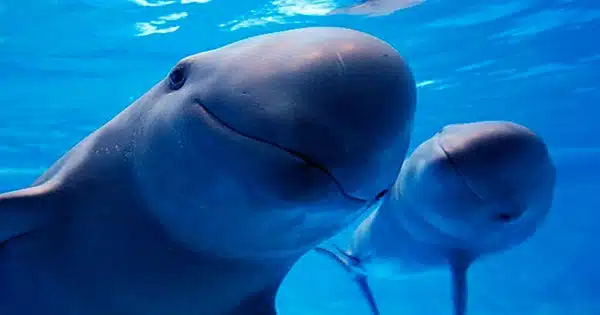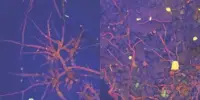The situation of the world’s most endangered marine mammal, the vaquita, is well recognized. The smallest of all cetaceans, their numbers have declined in recent years to the point that extinction is probably certain. Their numbers fell from roughly 100 in 2014 to barely 30 in 2017, and estimates now place them at around 10 left on the globe.
The small porpoises, on the other hand, are so elusive that researchers have had to alter population estimates several times and are still learning about their habits.
Scientists discovered three pairs of mothers and calves on recent expeditions to survey the beasts, providing a ray of optimism. Not only does this indicate that the porpoises are still breeding, but it also suggests that vaquitas produce young every year, rather than every other year as previously supposed.

Vaquitas are found only on the northern edge of the Gulf of California, near Mexico. Despite the Mexican government’s efforts to provide a protected habitat for the vaquita, the cause of their precipitous loss is also well known: unlawful fishing methods.
The vaquitas share their habitat with the (also critically endangered) totoaba fish, which is a highly coveted product in China for its alleged “medicinal value,” with bladders fetching thousands of dollars on the illegal market. Poachers employ gillnets to catch fish, despite the government’s prohibition, and vaquitas are eventually caught in them.
The government teamed up with Leonardo DiCaprio’s Foundation to pledge to conserve their ecosystem, deploying Navy-trained dolphins to locate them, and various attempts to round up and move them to a specially protected marine refuge to start a captive breeding program, which had to be abandoned after the death of a female caught.
Visual surveys of vaquitas conducted this year in August and September provided sightings of at least six separate individuals from two groups, according to Mongabay. In October, another group discovered three mother and calf pairs.
“So the good news is that they are producing calves,” Lorenzo Rojas-Bracho, head of the Mexican National Commission of Natural Protected Areas’ Marine Mammal Research Group, told the San Diego Union-Tribune. “And we have the survivors who have been able to survive all these years, and it’s important to protect them because the survival of vaquita depends on these individuals we have now.”
Rojas-Bracho and colleagues have been monitoring the remaining animals with acoustic equipment for the last few years. They also observed mothers and babies in 2017 and 2018, authoring a paper that suggests despite previous indications that vaquitas gave birth every other year, the ability to identify the remaining individuals and the observations of the same animals with a new calf in consecutive years suggested that vaquitas, like harbor porpoises, are capable of annual calving.
“The ability of a small population to recover after a severe decline is strongly influenced by its reproductive biology,” the researchers said in a paper published in the journal Marine Mammal Science. If the vaquitas are more prone to reproduction than previously assumed, this could be crucial in bringing them back from the brink of extinction. The most difficult challenge is enforcing the gillnet prohibition, which the Mexican government is under fire for because, according to several reports, illicit poaching is still common in Mexico’s officially protected Vaquita Refuge.















